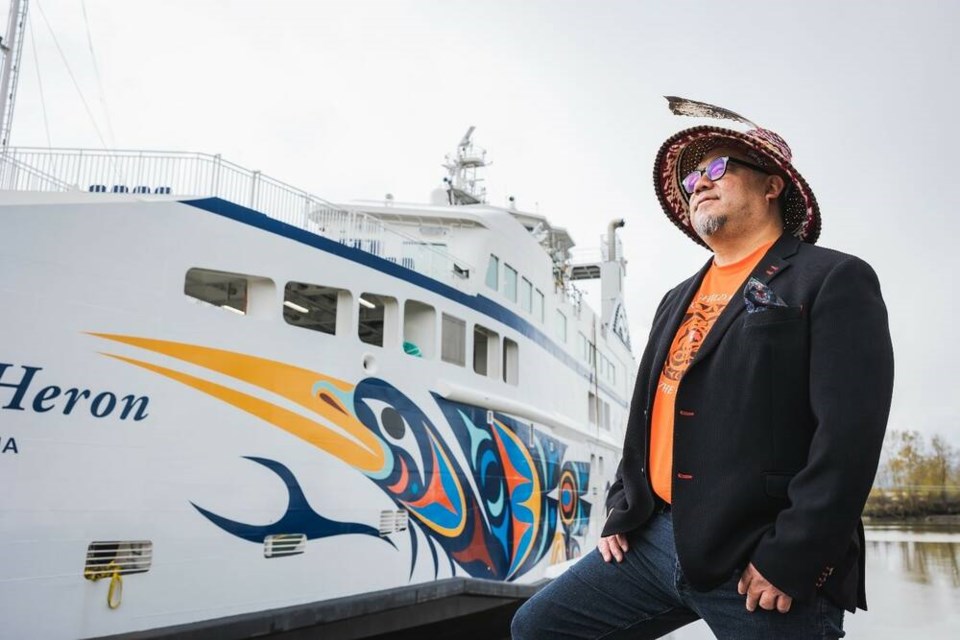Duncan artist Maynard Johnny Jr. admits he was impressed finally seeing his design come to life in massive form aboard one of B.C. Ferries’ new Salish-class vessels.
“My heron started out as a six-inch-by-two-inch sketch, so to see it on such a grand scale on a B.C. Ferries vessel is amazing,” said the Penelakut First Nation artist, who got a private viewing of the recently painted vessel at B.C. Ferries’ Richmond maintenance yard.
Johnny, whose Indigenous name is Thii Hayqwtun, designed the heron for the Salish Heron, the fourth Salish-class vessel featuring Indigenous art.
The name and artwork are meant to honour the Coast Salish as the original mariners of the Salish Sea.
The art on the Salish Heron is roughly the length of a seven-storey building laid on its side and wraps the hull of the ship.
“I’m hoping that my daughter and grandchildren will see the Salish Heron and know that you can achieve something special when you put your mind to it,” Johnny said. “When they see my art on such a grand scale, I hope they’re influenced by it and have ambition to chase their goals. I’ve always wanted to influence my daughter and grandchildren to move forward in a positive way.”
The artist drew inspiration for the design from the herons that populate the West Coast. The birds have been seen as guides to where fish are abundant.
“The idea is to send a message to the people of British Columbia, Canada and the world that Indigenous people have been here since time immemorial,” he said. “Introducing the Salish Heron and three other Salish ferries with Indigenous art to the B.C. Ferries fleet is a step forward. It’s a small step, but every step counts.”
The Salish Heron is identical to the three other Salish-class ferries built in Poland for B.C. Ferries in 2016. It is 351 feet long and can carry at least 138 vehicles and up to 600 passengers and crew.
It is scheduled to enter service in the Southern Gulf Islands beginning this summer.
The new Salish class of vessels is part of efforts to standardize the B.C. Ferries fleet. Fewer classes mean crew can be trained on more than one identical ferry.
The Salish Class hull design creates a very small wake and the electric propulsion and structural design ensure a quiet ride, B.C. Ferries said.
Salish class vessels are powered by liquefied natural gas, a cleaner fuel than diesel.




